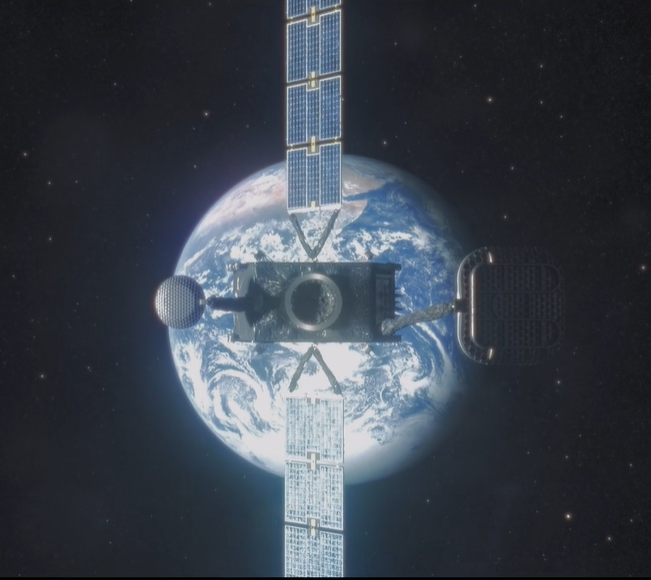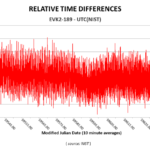Australia and New Zealand recently signed a $187.4m AUD contract with Inmarsat for the company to provide the Southern Positioning Augmentation Network (SouthPAN) satellite service from one of its three new I-8 satellites.
SouthPAN is a joint initiative of the Australian and New Zealand Governments that provides the first Satellite-Based Augmentation System (SBAS) service for Australia and New Zealand, according to the Geoscience Australia website. Geoscience is serving as the lead Australian government agency for SouthPAN and is working with Toitū Te Whenua Land Information New Zealand to develop, deploy and operate the SBAS in the Southern Hemisphere.
SouthPAN is comprised of reference stations, telecommunications infrastructure, computing centers, signal generators, and satellites that provide improved positioning and navigation services—boosting positioning accuracy from between 5 to 10 meters to 10 centimeters. Early Open Services have been available since last September.
“SouthPAN provides augmented and corrected satellite navigation signals directly from the satellite rather than through a mobile phone,” according to the website. “This allows 10 centimeter level accuracy to be available everywhere, overcoming gaps in mobile, internet and radio communications.”
Every major industry across Australia and New Zealand will gain positioning and navigation benefits from SouthPAN, according to a press release about the contract.
Through that contract, signals will begin broadcasting services from the Inmarsat-8 satellite in 2027. The satellite will provide redundancy and resilience in SouthPAN to ensure continuous signal broadcast. All three I-8 satellites are scheduled to launch in 2026.
The SouthPAN I-8 satellite will be a critical part of a safety-of-life-certified SouthPAN for aviation and other applications, which is scheduled to begin in 2028.
“SouthPAN represents extraordinary potential for the region. It can save lives by enabling precision safety tracking, help farmers improve productivity through automated device tracking, or even support transport management systems of the future,” said Todd McDonell, president, Inmarsat Global Government, according to the release. “We have a long history providing services for governments in the moments that matter most, and we are delighted that our Inmarsat-8 satellites will continue that legacy well into the 2040s.”
The I-8 satellites
Switzerland’s SWISSto12 will develop the eighth generation satellites, according to a news release about the new I-8s. The company will leverage its HummingSat satellite platform along with its 3D-printing technologies and specialized Radio-Frequency (RF) and payload products to develop and manufacture the geostationary satellites.
At 1.5 cubic meters in volume, the new class of spacecraft features a form factor up to five times smaller than conventional geostationary satellites but can still deliver critical safety services.
The three satellites will provide an extra layer of resilience to the existing constellation and Inmarsat’s two I-6 satellites. The radio navigation transponders launched on them will enable SBAS systems globally.
“Every single day people around the world depend on Inmarsat services,” Inmarsat Chief Technology Officer Peter Hadinger said, according to the release. “Our customers have demanding, and often safety-critical, missions that rely on our satellite technology for links that can make the difference. The I-8s will not only underpin our existing capabilities for the future, but enable ever more advanced safety innovations like SBAS that can ultimately help save more lives.”
Other SouthPAN Players
Last fall, the government of Australia awarded Lockheed Martin with a $1.18 billion contract to establish SouthPAN and announced plans to use the company’s Second-Generation SBAS, broadcasting on two frequencies to augment signals—the U.S.’s GPS and the European Union’s Galileo system. The network is expected to be fully operational by 2028 and will be provided as a service for 19 years with an option to extend.
The second-generation SBAS augments messages for dual frequencies via multiple constellations (DFMC), using both L1 and L5 frequencies from the GPS constellation and E1 and E5a frequencies from Galileo. This enhances integrity and accuracy and eliminates reliance on one GNSS.
Lockheed Martin Australia will build the ground segment of SouthPAN, including the network of ground reference stations and satellite uplink facilities.
GMV partnered with Lockheed Martin in December, signing an agreement to develop the processing and control centers as well as to provide ongoing maintenance for the system.
A Resilient Service
Another satellite service procurement is in the works, further strengthening SouthPAN.
“These satellite services will provide redundancy and resilience for SouthPAN services and will ensure the continuous broadcast of SouthPAN correction signals at a high availability of 99.95%,” according to the website. “This enables the development and use of critical applications relying on SouthPAN.”






